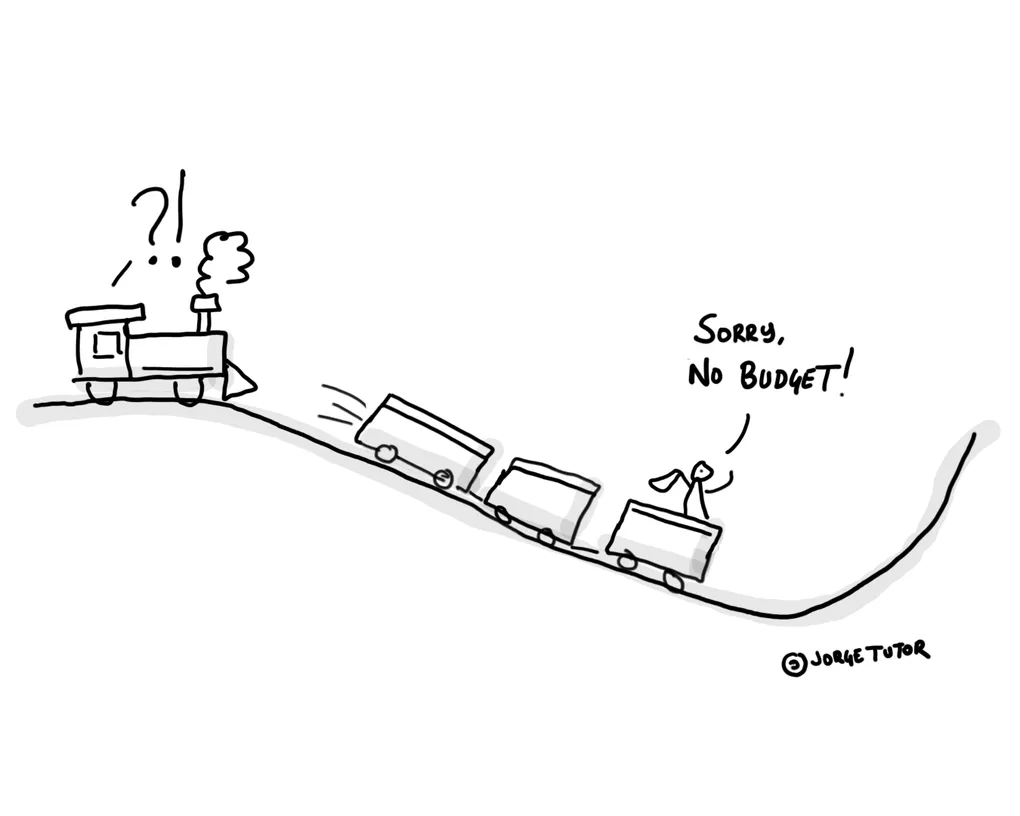Why Good Projects Fail Months After Experienced People Are Cut
Why the most expensive decision you can make is cutting costs on your best people.

In times of financial pressure, cutting costs isn’t just a choice; it can be a necessity for survival. The payroll, with its high-cost, experienced professionals, often seems like the most logical place to start. But this decision, born of necessity, can inadvertently become a ticket to a much deeper crisis.
The critical question isn’t if you should make cuts, but where. Removing the core of your team’s experience is a high-risk gamble that often accelerates the very failure you’re trying to avoid.
Without the proper guidance, for weeks, even months, a project can appear stable after knowledgeable people are let go. This is the dangerous illusion of “good-practice inertia”, and understanding it is key to avoiding a delayed, but inevitable, collapse.
Coasting on Good-Practice Inertia
A project with a strong foundation doesn’t break overnight. Systems designed by experienced teams have a built-in resilience. The code is structured, the architecture is solid, and the processes are established. This creates a momentum that can carry a project forward long after the guiding hands are gone.
During this silent period, a beheaded team can operate within the existing well-built framework. They can close tickets and add minor features that follow established patterns. Management, seeing stable output at a lower cost, may believe the decision was a success. However, this is an illusion. The team isn’t building on the foundation; they are slowly eroding it with every decision made without the benefit of experience.
A Failure of Management, Not Talent
The foundational mistake is viewing team members as interchangeable units, a fallacy that leads to a critical failure in management strategy. When experience is removed or replaced with less experienced people, the system is set up to fail. The blame lies not with the less-experienced developers, but with the removal of the very guidance structure they need to succeed.
Consider this common scenario:
-
The System: A flexible promotions engine was built by an experienced team, designed to be easily extended. As part of a budget cut, the core team is dissolved and replaced with a lower level of expertise.
-
The Task: A complex new promotion is requested.
-
The Predictable Outcome: The new team, lacking the context and guidance from those who have solved similar problems before, takes a “shortcut.” They hard-code the new logic directly into a core system. This isn’t a failure of their talent, but a failure of a process that removed their mentors. The result is a fragile system, but the cause was a management decision that devalued the role of experience in guiding the team.
This illustrates how the project gets entrapped. The outcome is not just a slowdown; it’s a “faster, harder” failure baked in by a flawed cost-saving strategy. The problem is a lack of guidance.
The Irreplaceable Value of Experience
A resilient team is not built on a single “hero” figure. It is built on distributed knowledge, robust documentation, and strong processes. This is essential to avoid creating single points of failure.
Knowledge, the “what” and “how” of a system, can and should be shared. But experience is different.
Experience is the wisdom gained from having faced similar problems in the past and knowing which solutions lead to dead ends. It’s the pattern recognition that documentation cannot teach. It’s the intuition that separates a calculated risk from a reckless shortcut. When you remove knowledgeable people, you lose:
-
Navigational Skill: The ability to steer the project away from technical icebergs that newer teams cannot see.
-
Mentorship: The capacity to turn the team’s documented knowledge into practical wisdom, elevating everyone’s skills.
-
A Human Firewall: experienced professionals act as a crucial filter, preventing impractical ideas or short-sighted requests from derailing the project.
Losing this core of experience leaves the entire team, regardless of their talent, operating without a map in a minefield.
When Inertia Runs Out
The illusion of stability shatters when the accumulated debt from inexperienced decisions hits a critical mass. The hidden problem becomes an undeniable crisis. The symptoms are familiar:
-
Development grinds to a halt. Simple features become monumental tasks.
-
Bugs multiply. Every fix seems to cause several new, unrelated regressions.
-
Morale plummets. The team becomes frustrated fighting a system that is now complex and brittle.
By the time a project feels broken, the critical damage was done months earlier. The system has reached a tipping point where the cost to fix the foundational flaws is astronomical. The initial “cost-saving” has now matured into a catastrophic liability.
Protect Experience as a Core Asset
When faced with budgetary constraints, every expense must be scrutinized. But treating experienced team members as a simple line item is a false economy. The true liability isn’t a high expense; it’s the absence of experience.
The most resilient and financially sound strategy is to protect the core of experience within your team. These knowledgeable people are not a cost center; they are the strategic asset that makes it possible for the rest of the team to deliver value securely and efficiently. They are the difference between navigating a crisis and creating one. Keep them close!
← Back to Blog